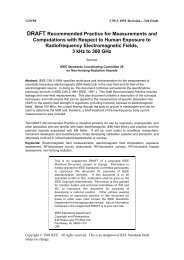An introduction to the quark model
An introduction to the quark model
An introduction to the quark model
Create successful ePaper yourself
Turn your PDF publications into a flip-book with our unique Google optimized e-Paper software.
Few-charge systems His<strong>to</strong>ry of <strong>the</strong> <strong>quark</strong> <strong>model</strong> Mesons Baryons Multi<strong>quark</strong>s and o<strong>the</strong>r exotics Outlook<br />
Light-<strong>quark</strong> baryons<br />
<strong>An</strong> impressive description of many data with a simple <strong>to</strong>ol,<br />
But some persisting problems,<br />
Let us concentrate on two of <strong>the</strong>m<br />
The Roper resonance = radial excitation of N or ∆<br />
In most <strong>model</strong>s, predicted above <strong>the</strong> orbital excitations with<br />
P = −1<br />
Similar <strong>to</strong> ψ ′ > χJ<br />
This is unavoidable with <strong>model</strong>s with ∆V (r) > 0<br />
One suggestion: Yukawa type of interaction among <strong>quark</strong>s<br />
(Glozmann)<br />
Missing states, e.g., [20, 1 + ]<br />
Absent or not seen since weakly coupled <strong>to</strong> usual entrance<br />
channels?<br />
A <strong>quark</strong>-di<strong>quark</strong> <strong>model</strong> has been proposed (Lichtenberg, Torino<br />
group)<br />
<strong>An</strong>d is often revisited (Jaffe-Wilczek, Maiani et al., etc.)<br />
Warning: if D = (qq) taken seriously, do you predict ( ¯ DD) or<br />
(DDD)? New spectroscopy!<br />
JMR Quark Model

















